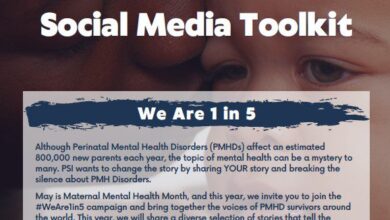Me First – Part 1: Burnout in the Birth Workers

We work in spaces that hold both the best of times and the worst of times. We are given the rare honor of an invitation to enter the lives of our clients in the happiest and most intimate situations. But as wonderful as this work is, it’s also stressful. We train to know how best to meet their every need. We pour ourselves into service in preparing families for labor, birth and newborns, in bringing new life, and in supporting new families. It’s amazing, it’s fun, and it’s a joy. However, all the time, many of us are slowly (or quickly) burning ourselves out.
We have specific burnout data for midwives. Thumm et al reported that 40%, or two out of five, certified nurse midwives and certified midwives in clinical practice in the United States experience burnout. [1] We don’t know the exact numbers for doulas, but we do know that the factors that contribute to burnout are similar. [2] The demand for doulas is increasing as the data continues to speak to the importance of our work. Reducing burnout and increasing job satisfaction for maternal support workers can only be a good thing.
The work we do is costly for ourselves and our family. The cost is physical, emotional, and psychological. Working at night has been shown to affect circadian rhythms and is also linked to several other health issues including metabolic disorders (obesity, diabetes) [3] and even cancer. [4] When we serve families, we can put our needs before theirs. Birth is not usually scheduled and missing family events or missing special occasions is costly, again, to ourselves and our families. It is expensive to step out of our lives, for a moment, and step into the lives of the families who hire our services. We know that maternity support workers experience higher levels of burnout when they experience high levels of work/family conflict. [2] Labor doulas face additional stress and vicarious suffering that comes with witnessing obstetric violence, defined as “… the appropriation of a woman’s body and reproductive processes by health personnel, in the form of dehumanizing treatment, abusive medicalization and pathologization of the natural process, involving the loss of a woman’s autonomy and the capacity to freely make her own decisions about her body and her sexuality, with negative consequences for the quality of life of One girl.[5] Repeated witnessing of these events increases the risk of burnout for maternal support workers. [2]
Our families pay the cost when having to leave for events and occasions. They pay the cost when we walk out the door, never knowing how long it will be before we return. They may be worried when we leave in the middle of the night, rain or shine, to attend a family and I imagine it’s worrying to sleep with your parent there, then wake up to find them gone and you don’t know if when. they will go home again. Our significant others may be called upon to shoulder a greater share of the burden of family life, all in service of the work we do for others. The work we do is expensive. When we take intentional care of ourselves, we reduce that cost to ourselves and our families, without compromising the service we provide to our clients.
Sources
- Thumm EB, Smith DC, Squires AP, Breedlove G, Meek PM. Burnout of the US midwifery workforce and the role of the training environment. Health Serv Res. 2021;1-13. doi:10.1111/1475-6773.13922
- Naiman-Sessions, Miriam and Henley, Megan and Roth, Louise. (2017). Bear the Burden of Care: Emotional Burnout in Maternity Support Workers. 10.1108/S0275-495920170000035006.
- Skene DJ, Skornyakov E, Chowdhury NR, Gajula RP, Middleton B, Satterfield BC, Porter KI, Van Dongen HPA, Gaddameedhi S. Separation of circadian- and behavior-driven metabolite rhythms in humans provides a window into peripheral oscillators. and metabolism. Proc Natl Acad Sci US A. 2018 Jul 24;115(30):7825-7830. doi: 10.1073/pnas.1801183115. Epub 2018 Jul 10. Erratum in: Proc Natl Acad Sci US A. 2021 Sep 7;118(36): PMID: 29991600; PMCID: PMC6065025.
- NTP Cancer Risk Assessment Report on Night Shift Work and Night Light (April 2021): https://ntp.niehs.nih.gov/ntp/results/pubs/cancer_assessment/lanfinal20210400_508.pdf
- Second Hemispheric Report on the Implementation of the Belém do Pará Convention – Follow-up Mechanism to the Belém do Pará Convention (MESECVI) (April 2012): https://www.oas.org/en/mesecvi/docs/MESECVI-SegundoInformeHemisferico – EN.pdf
About the Author







